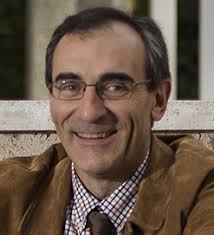NANBIOSIS-ICTS AT CASEIB 2020
The XXXVII Annual Congress of the Spanish Society of Biomedical Engineering (CASEIB) is taking place between November 25 and 27. This new edition of CASEIB, in virtual format is organized by the CIBER-BBN group of Biomedical Engineering at Valladolid Universitiy, led by Prof. Roberto Sánchez Hornero.
Prof. Laura Lechuga, Scientific Director of NANBIOSIS U4 Biodeposition and Biodetection Unit, member of the advisoty committee of scientific experts (Multidisciplinary Working Group) to the Ministry of Science and Innovation in COVID-19 and coordinator of the European project CONVAT shall participate in the Roundtable I: Biomedical Engineering and COVID-19 November 26, 12:00 h
Researchers of BSICoS Group from CIBER-BBN and I3A-UZ, running NANBIOSIS U27 High Performance Computing, led by Prof. Pablo Laguna, will participate defending their last works:
- “Delay between QT and RR in stress test records as an indicator of the heterogeneity of ventricular repolarization”. Cristina Pérez, Esther Pueyo, Juan Pablo Martínez, Jari Viik, Pablo Laguna.
- “Prediction of sudden death in patients with chronic heart failure by studying the periodic dynamics of repolarization”. Saúl Palacios, Iwona Cygankiewicz, Antoni Bayés-de-Luna, Juan Pablo Martínez, Esther Pueyo.
- “Electrodermal response analysis for the identification of patients with depression”. Marta Martínez, Jesús Lázaro, Spyridon Kontaxis, Pablo Laguna, Eduardo Gil, María Luisa Bernal Ruíz, Sara Siddi, Concepción de la Cámara, Jordi Aguiló, Esther García, Josep María Haro, Raquel Bailón.
- “In silico characterization of the duration of repolarization and its variability in Type 1 Long QT syndrome under β adrenergic stimulation”. David Adolfo Sampedro-Puente, Fabien Raphel, Jesús Fernández-Bes, Pablo Laguna, Damiano Lombardi, Esther Pueyo
- “Monitoring of Blood Potassium Concentration in dialysis through changes in the multi-lead morphology of the T wave: Comparison between using the transformation in Periodic and Principal Components”. Flavio Palmieri, Pedro Gomis, José Esteban Ruiz, Dina Ferreira, Alba Martin, Esther Pueyo, Pablo Laguna, Juan Pablo Martínez, Julia Ramírez.
Further information on BSICoS website
On the other hand researcher of NANBIOSIS at JUMISC will present:
- “Study of the influence of the diameter and temperature of the nozzle on the thickness of the filament for bioprinting“. Enrique Mancha, Juan Carlos Gómez Blanco, Alfonso Carlos Marcos Romero, Manuel Matamoros Pacheco, Francisco Miguel Sánchez Margallo, José Blas Pagador Carrasco.
- Influence of voluntary contractions on the basal sEMG activity of the pelvic floor muscles. M. Albaladejo-Belmonte, M. Tarazona, F.J. Nohales, J. Alberola-Rubio, J. Garcia-Casado
- 3D Printing Mold Making: Soluble Male Viability for Hollow Artificial Organs Juan Carlos Gómez Blanco, José Blas Pagador Carrasco, Antonio Jesús Rodríguez Fuentes, Alfonso González González, Mara Olivares Marín, Jesús Usón Gargallo, Francisco Miguel Sánchez Margallo
Further information on JUMISC website










